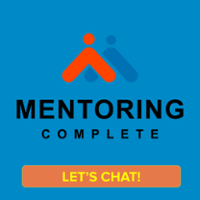
The COVID-19 pandemic brought with it a host of challenges for both employees and employers. The fear, anxiety, and health issues caused significant disruptions in the business environments. It is now quite certain that there is no going back to the pre-pandemic phase and that organizations have to find a breakthrough in managing their widely dispersed workforce. One of the ways to counter the challenges of employee productivity and engagement in a hybrid environment is by using Mentoring Software.
Technological advancements, changing global business environments, and a geographically dispersed workforce have metamorphosed traditional mentoring into e-mentoring, or virtual mentoring. It offers numerous benefits to both employees working virtually helps in providing support and assistance by surpassing geographical barriers.
Mentorship is an age-old practice of creating a dynamic and process-oriented workforce. Because of its innumerable benefits, such as skill development, enhanced engagement and productivity, and increased ROI, organizations have started investing heavily in it. It is no surprise that most Fortune 500 organizations use some form of mentoring program to support their employees. They are employing mentoring software to cater to the needs of the organization and create a dynamic workforce that can support the changing organizational needs.
Also Read: How to promote employee wellbeing at workplace?
What is Mentoring Software?
Mentoring software is a technical platform that enables organizations to run effective mentoring programs. Backed by the latest frameworks like Artificial Intelligence, Machine Learning, and Human Psychology, it offers multiple benefits to make mentoring programs successful. They facilitate precision matching of mentor-mentee relationships, goal-setting, a dashboard to monitor progress, and reports to measure the success of a program.
Mentoring software is a breakthrough in the field of human resource management. They aid in the channeling and streamlining of the workforce, allowing organizations to maximize the potential of their employees.Moreover, it lets employees understand their current skill set and offers them opportunities to learn and grow in their current roles.
Well-organized mentoring software helps in aligning the employee goals with the organizational goals. It further prepares a workforce that is equipped with the skills required to deliver on the unprecedented problems posed by changing business dynamics, increasing competition, government regulations like green practices, and the changing climate.
Also Read: Qualities of a good mentor
How Does Mentoring Software Work?
Organizations need to understand the key objectives they wish to achieve by using mentoring software. A careful consideration of employees’ current performance levels, organizational goals, and employees’ expectations will reveal the kind of mentoring program that will fulfill the business objectives.
It is the responsibility of human resource managers to carefully execute the program at every stage in order to achieve the maximum benefits.
In general, the following steps are involved in the operation of mentoring software:
1. Create a Mentoring Program
An organization usually appoints a program manager to look into the operations of a mentoring program. Once the goals and objectives of the program are decided by the organization, a program manager can create a mentoring program that is aligned with the goals. A program can involve mentoring executives and senior-level managers to improve their leadership skills or mentoring junior employees to develop their managerial skills.
Based on the objectives, a manager can select a program offered by the mentoring software, such as group, one-on-one, reverse, and others. Furthermore, it also involves setting up guidelines, standards, and processes for the smooth running of the program.
2. Fill Out Mentor Mentee Matching Form
The next step involves both mentors and mentees filling out a matching form. The purpose of the form is to identify the areas that are important from the perspectives of mentors and mentees. Moreover, it helps in laying the foundation for creating a correct match that complements the mentoring relationship. Some of the areas that are assessed by the form are listed below.
- Personal characteristics of mentors and mentees
- The importance of career planning and development
- Understanding of business goals, needs, and dynamics
- Expected characteristics of the mentor and mentee
- Mentoring session frequency
- The number of assessments required for the program
- Results expected out of the mentoring program
Upon completion of the matching form, the tool provides mentor-mentee matches based on a certain algorithm. The program manager has the responsibility to do a final check on the suggested pair, and if required, make changes as per the details submitted in the forms.
Also Read: 12 Ideas for business mentoring activities
3. Introduction Session
In the introduction session, a mentee conveys the objectives he/she wants to accomplish with the mentoring program. Both mentor and mentee have to agree on certain objectives for the learning path they will follow. It is important for a mentee to clearly state their expectations of the mentor at this stage, as it will form the foundation of their relationship.
Other things discussed in the session are the starting date of the program, expected deliverables, supporting materials required, completion date, and assignments to be completed during the mentoring program.
Also Read: How to find a business mentor?
4. Fill Out The Mentoring Agreement
A mentoring agreement is a tool that allows the pair to set some ground rules and agree on the focus areas of the mentoring relationship. The agreement lays down the expectations and objectives already discussed in the previous step. The match becomes official upon acceptance of the agreement by both parties. Thereafter, they can connect virtually at the agreed frequency and start the mentoring process.
5. Mentoring Checkpoints
Without direction and guidance, the mentoring program might lose its momentum and not offer the expected results. To ensure that a program stays on track, the program manager has to create certain checkpoints that help gauge the progress and highlight any challenges faced by the pair. Some of the questions that form part of the checkpoints are listed below.
- Describe how your first few meetings were with the mentor.
- Are there any issues regarding the mentoring relationship?
- Do you need any assistance from the program manager?
- Describe the progress of the mentoring program so far.
Also Read: Impact of mentoring in the workplace
6. Measure Success
The success of a mentoring program is measured by analyzing the objectives set up during the initial phase. The program manager has to gather data and feedback throughout the program to get the final output. Segregating the goals into short-term and long-term objectives helps in measuring the results. Short-term objectives may include the number of participants involved, dropout rate, overall feedback and more. On the other hand, long-term objectives include reductions in employee turnover, employee engagement and productivity, customer satisfaction, and more.
Also Read: Mentoring goals for inspiration
Mentoring Complete: A Robust Mentoring Software
Mentoring Complete is a comprehensive mentoring platform that supports organizations in developing a successful mentoring program that is aligned to their organizational goals. It offers multiple benefits to organizations in creating an impactful, skilled, and diverse workforce. Some of the features that set it apart from other platforms include precision mentoring, anytime mentoring, program design and implementation, mentoring consultation, training, and launch services.
Let us look at the features in detail to get a better understanding of the mentoring software.
- Precision Matching
It is a proven fact that wrong mentoring is worse than no mentoring. It not only destroys the relationship between a mentor and a mentee, but it can also jeopardize the associated benefits of mentoring.
The success of a mentoring program heavily depends on the mentor and mentee relationship. Usually, program managers are given the task of matching mentees with mentors based on factors like employees’ skill sets, expectations from the program, and employee experience. But due to personal and professional bias, the matches often lead to the failure of a mentoring program.
Precision mentoring is a stand-alone module that utilizes advanced AI matching algorithms to match a mentor with a mentee. It offers an efficient, timesaving, and quality match with a 90% success rate. Program managers can use the deep insights gathered by the tool to create better matches that lead to successful mentoring relationships.
Also Read: Tips to delivering effective virtual mentoring programs
- Anytime Mentoring-Online Mentoring Platform
Imagine a social learning platform within the organization that allows employees to search for people with the respective skills. How easy it would be to find a mentor with the right skills and connect with them. That’s what anytime mentoring is about. It offers a virtual platform where every employee can create a profile and mention their skills and expertise.
Many organizations have found that the knowledge required to excel is already present in the workforce. To utilize that knowledge, organizations need to offer a social learning platform where employees can connect and find experts that are willing to mentor others. With the help of anytime mentoring, it becomes easier to create a learning community of mentors and mentees.
- Program Design and Implementation
Designing and implementing a mentoring program is a cumbersome process. It requires experts with industrial knowledge who understand the needs of the organization and align them with the mentoring programs. To help succeed in this, Mentoring Complete offers program design and implementation services that offer the skills, experience, and perspective necessary to create, manage, and sustain a successful mentoring program.
The mentoring consultants help organizations select the right mentoring program based on their mentoring goals. Moreover, it helps program managers and leaders understand the effectiveness of their previous programs and customize them as per organizational objectives.
Also Read: 5 Business Benefits of Thoughtful Mentoring Programs in the Workplace
Conclusion
Embracing technology can help organizations resolve the unprecedented challenges put forward by the pandemic and changing business environments. As the saying goes, “Success lies in the hands of those who are ready for it”. In a highly competitive market, focusing on employee re- and upskilling will assist organizations in remaining future-ready. By using advanced and innovative mentoring software, they can promote learning and skill development at every level of the organization and create a highly potential workforce.
